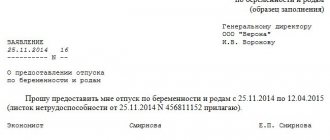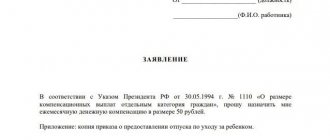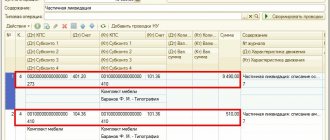Reasons for liquidation of the enterprise
The issue of liquidation can be raised both by the founders of the enterprise and by the controlling government bodies at the place of registration or business. That is, liquidation occurs either voluntarily or compulsorily. It is also possible for an enterprise to cease its activities during the bankruptcy process.
The reason for the forced liquidation of an enterprise is most often a systematic violation of the law. It occurs by a court decision, which is addressed by a government agency, whose representatives consider the violations to be sufficient to formalize the termination of the legal entity’s activities. In addition, there are special grounds - for example, exceeding the permissible number of company participants.
Liquidation by decision of the founders is carried out due to various circumstances. It may happen that the founders of the enterprise simply believe that the company has completely fulfilled its objectives. However, most often this happens due to financial problems. The initiative can come from both the center and their branches of the enterprise.
Dismissal procedure during liquidation
The entire staff, all employees, even those who are on sick leave or maternity leave, can be dismissed due to termination of operations. Each employee must be personally notified in writing two months in advance of the upcoming layoff. This is provided for in Art. 180 of the Labor Code of the Russian Federation as a certain guarantee for dismissed employees. The manager must arrange for such forms to be recorded with a receipt stamp as evidence of timely notification.
Also, according to this norm, the employer can dismiss the employee before the expiration of the specified period of two months, but only with his written consent. In this case, an additional compensation payment is made in the amount of the employee’s average earnings, calculated in proportion to the time remaining before the expiration of the notice period.
Otherwise, the dismissal procedure is no different from the usual one.
Features of dismissal during the liquidation of special groups of employees
For pregnant women and women on maternity leave (these are categories of workers who usually enjoy additional guarantees upon dismissal) no privileges are provided upon dismissal in the event that the enterprise ceases its activities. Labor legislation and judicial practice do not give any reason to believe that they have any advantages over the rest of the staff, which is quite logical, because the organization is being liquidated and ceases its activities completely. Management should inform employees that such women need to register with the social security authorities, since all payments in connection with pregnancy, childbirth, and child benefits will be assigned by this body, as well as paid. Payment of maternity payments must be made exactly within the period specified by law, no later than the last day of work.
Pensioners do not have additional benefits, unlike pre-retirees. As part of the pension reform, a rule has been approved that such citizens, having registered with the central pension center and in the absence of employment due to the fault of this organization, have the right to count on early assignment of maintenance from the state.
Part-time workers and seasonal workers, unlike the rest of the staff, do not have the right to count on compensation in full. They can only count on severance pay. Seasonal workers are generally warned according to the general rule, that is, 7 days in advance and are paid two weeks' wages. Severance pay is not paid to employees who have entered into a fixed-term contract (for a period of up to 60 days), and they are warned about the upcoming dismissal only 3 days in advance.
The employment relationship with the manager who is a member of the liquidation commission (or who is the sole liquidator) is terminated last, as well as with the employees involved in the liquidation. It is the liquidation commission or liquidator that are the governing bodies in the process of formalizing the termination of the enterprise’s activities. The bankruptcy process provides for other positions and governing bodies.
Documentation of dismissal of employees
The notice of the upcoming layoff is drawn up in any form, but it is necessary to convey the necessary information to the employee and receive a mark of familiarization with it. References to labor legislation are desirable. Familiarization with the documents and strict adherence to the procedure are mandatory, even if management believes that the state does not plan to challenge the administration's actions in court.
The order is drawn up in a unified or free form; it is necessary to display information about the dismissal, the grounds, and compensation made in connection with this. It is also recommended to comply with the rules of office work, indicate details of documents, positions, adherence to the general form and structure of the document, etc.
Entries in the work book are made as follows:
The employment contract was terminated due to the liquidation of the organization, paragraph 1 of part one of Article 81 of the Labor Code of the Russian Federation.
Payment of benefits and registration of entries in work books
After the employees are given official notice of the upcoming liquidation and a full 2 months have passed, the personnel service issues a general order for the dismissal of employees upon liquidation of the f. T-8a, or separately for each employee according to f. T-8.
In addition to the personnel order, a general order is also issued for the organization as a whole on the dismissal of all employees due to the complete cessation of business activities. All orders must be signed personally by each employee.
Liquidation of a company means its complete exclusion from all state registers as a legal entity. This means that a company with such a tax identification number will no longer exist, and its rights and obligations will no longer be transferred to other persons.
Final payments
As for payments, earnings, together with vacation compensation and the due severance pay for the first month, are paid on the day of dismissal through the cash register in cash or by transfer to a plastic card. The method of payment is usually indicated in the text of the employment contract.
If an employee was sick, was away from work, or was absent for other reasons, he may receive the payments due to him later than the last pay day. To do this, he needs to contact the company and make a written request. The former employer is obliged, upon first request, to pay the amounts due to the dismissed employee in connection with the liquidation.
Also, do not forget to issue the employee all the required certificates:
- this is a certificate of average earnings for the Employment Center in a form approved by the territorial body of the employment service
- certificate of earnings for calculating sick leave f. 182n
- standard 2-NDFL certificate of earnings for the last year of work
On the day of final payment, the personnel employee is obliged to hand over in writing, against signature in the accounting book, the work books stored in the company to their owners with marks of dismissal due to the end of the company's activities.
Strict compliance with all rules of dismissal, warning of workers and employment services, calculation of payments, and preparation of documentation is necessary both in the interests of the organization and its employees. This approach will allow both sides of the labor relationship to part without conflict, and for the organization it will save time and resources that can be spent on legal disputes and possible sanctions from regulatory authorities: labor inspectorate, employment service and tax authorities. In case of infringement of his interests, the employee is not limited in any way in his right to file a lawsuit in order to restore his rights and receive the necessary compensation.
Top
Write your question in the form below
What payments are due to employees upon liquidation of an enterprise?
The list of payments upon liquidation of an enterprise is contained in a number of articles of the Labor Code of the Russian Federation. These standards guarantee the dismissed employee the following amounts:
- wages for the period of work before termination of the employment contract, bonuses, allowances (Article 136 of the Labor Code of the Russian Federation);
- monetary compensation for vacation unused during employment before the liquidation of the organization (Article 127 of the Labor Code of the Russian Federation);
- severance pay in the amount of the average monthly salary (conditionally - salary, the calculation of the amount will be discussed below) (Article 178 of the Labor Code of the Russian Federation);
- wages maintained for the period of employment, but not more than two months from the date of dismissal (including severance pay). In certain cases, such compensation is retained by the employee for the third month from the date of dismissal. However, to do this, he needs to be unemployed at this time and receive an appropriate decision from the employment service body, provided that the employee contacted this body within two weeks after dismissal and was unable to find a new job. (Article 178 of the Labor Code of the Russian Federation);
- an additional payment in the form of compensation in the amount of wages in proportion to the time before the expiration of the notice period for dismissal, if the employer dismisses the employee with his consent before the expiration of the statutory notice period for termination of employment and liquidation of the company (Article 180 of the Labor Code of the Russian Federation);
- payments provided for by labor or collective agreements in the event of liquidation of a business and representing a kind of financial assistance to employees during the period of employment (Article 178 of the Labor Code of the Russian Federation).
The calculation period for points 1, 2, 5 and 6 is the last day of work of the reduced employee in the organization that is being liquidated and is obligated to pay the specified amounts. (Article 140 of the Labor Code of the Russian Federation).
Difficulties are usually caused by the calculation of payments listed in paragraphs 3 and 4 of the above list. Let's look at them in more detail.
Severance pay upon liquidation of an organization in the amount of the average salary, which is calculated in accordance with clause 9 of the Decree of the Government of the Russian Federation of December 24, 2007 N 922 “On the specifics of the procedure for calculating the average salary” according to the formula:
average daily earnings in rubles X number of working days in the first month after dismissal.
The number of working days is determined according to the organization’s work schedule for the corresponding period, which will begin on the first day after dismissal. For example, if an employee is fired on 06/06/2017, working days are counted from 06/07/2017 to 07/06/2017 (with a five-day working week - 21 working days).
Solving financial issues in connection with termination of work
In 2021, legislation includes the concept of severance pay as an absolute settlement with subordinates, taking into account all compensation. This calculation must include all of the following payments:
- calculation of payment for the performance of professional duties (a period is taken for which wages have not yet been accrued and paid);
- compensation for delayed wages, if any;
- compensation for vacation days that the employee has not yet had time to use;
- additional payments for the fact that the contractual employment relationship is subject to termination (average total monthly income);
- compensation for the third month, upon presentation of a certificate from the labor exchange about registration and failure to provide the former subordinate with work from a government agency (average total monthly income);
- severance pay for part-time workers (average total monthly income);
- in the first two months, those dismissed are paid compensation for employment (total monthly income on average, taking into account the fact that severance pay was paid).
Hired employees, after termination of contractual employment relations due to liquidation in 2021, are not entitled to any additional payments, calculations, severance pay or compensation (provided that the hiring period does not exceed two months). Seasonal workers have the right to receive payment. Payments in their case will be equal to the average salary for two weeks.
Features of calculating average daily earnings
There are features of calculating the average daily wage, in particular:
- if a person quits on the last day of the month, average earnings are calculated for the last 12 months, including the period of dismissal. This position is set out in the letter of Rostrud dated July 22, 2010 N 2184-6-1;
- if a person did not work for the entire billing period (was ill or was on maternity leave, etc.), then the billing period must be replaced by 12 calendar months preceding the last month when the person went to work. Reason: letter of the Ministry of Labor dated November 25, 2015 N 14-1/B-972.
After the first month from the date of dismissal, the employer does not make any payments to the laid-off employee.
Unused vacation
In order to include compensation for unused vacation, you need to know what types there are. Chapter 19 of the Labor Code explains that there is a basic annual leave, which the employer pays, and an additional one. It is provided in separately specified cases, which include irregular working hours, unusual nature of work activity, as well as in others listed in the legal act.
Article 120 of the Labor Code of the Russian Federation provides for the duration of vacation in calendar days (both main and additional). The calculation of compensation payments is also based on the number of unused calendar days. Article 115 of the Labor Code of the Russian Federation determines that annual paid leave of 28 calendar days is provided once a year (counting from the moment the employee is hired to work in this organization). That is, the year begins not on January 1, but on the first working day.
Articles 115, 120 of the Labor Code of the Russian Federation
The opportunity to receive severance pay for unused vacation is provided to all employees of liquidated organizations, regardless of the length of their work experience. And if, by the time of dismissal, the entries in the work book confirm 6 months of service, payment for vacation will be issued in accordance with the general procedure.
Important! In the case of work during a part-time working year, vacation is compensated based on the days actually worked. According to Article 139 of the Labor Code of the Russian Federation, the payment is calculated according to the formula - 2.33 days of vacation per month. The payment amount will be 2.33 multiplied by the number of months worked.
If the dismissal occurred closer to the middle of the month, less than 15 days are not added to the number of months, and if after the 15th day, they are rounded up to one more month (letter of the Federal Service for Labor and Employment dated June 23, 2006 No. 944-6).
How to calculate average earnings per day when determining compensation for vacation provided in calendar days? According to the standard procedure - the amount of wages accrued for the period under review, divided by 12 and the average number of calendar days in the month.
Calculator for calculating compensation for unused vacation upon dismissal
Go to calculations
Salary maintained during the period of employment
The payment specified in paragraph 4 is calculated at the end of the second month if the former employee presents the employer with a work book without an employment record and writes a statement. In this case, he needs to be paid wages for the period when he was unemployed. The employment period begins on the day following the day of dismissal and ends on the day preceding the day of new employment, or on the day of expiration of a two-month period from the date of dismissal, depending on which day came earlier (paragraph 2 of Article 14 of the Labor Code of the Russian Federation). In this case, the employee receives severance pay on the day of dismissal. Therefore, for the first non-working period, after its expiration, he will not receive anything, just as if he found a new job even a few days before the end of the second month. During this period of employment, wages are calculated including severance pay (paragraph 1 of Article 178 of the Labor Code of the Russian Federation) according to the formula:
average daily earnings X number of working days in the second month of employment before the day of hiring.
The amount of the average daily salary for this calculation is applied from the calculation given above for calculating severance pay. The number of working days is also determined according to the work schedule of the enterprise. For example, if an employee is fired on 06/06/2017, then the period for which he is entitled to compensation will begin on 07/07/2017 and end on 08/06/2017. If the employee is employed before the end of the second period, the days before being hired for a new job are taken into account.
To receive earnings for the third month, the former employee must bring a decision from the employment service about maintaining his average earnings. Such payment will be calculated in a manner similar to the previous compensation payment, in proportion to the days before hiring a new job.
Terms of payment of severance pay
If payments are not made on time, company officials face administrative liability. Those holding a leadership position must pay a fine of 1 to 5 thousand rubles, for legal entities the amount is higher - from 30 to 50 thousand rubles (Administrative Code, Article 5.27).
If the manager does not pay the due allowance for more than 2 months, he faces criminal liability. Here the punishment is determined taking into account all the circumstances. The court may order either monetary compensation (120 thousand rubles) or payment of an annual salary. In addition, the offender may be prohibited from working in a certain field for 5 years or imprisoned for up to 2 years (Criminal Code of the Russian Federation, Art. 145.1).
The terms of payment of severance pay can be divided into two parts:
- Payments on the day of termination of the contract and transfer of the work book. This period is strictly defined in labor law: payment, including salary, vacation compensation and the severance pay itself, must be calculated and transferred to the employee on the day of dismissal.
- Compensation that is transferred to dismissed personnel for the second month of unemployment and for the third (in some cases).
The accounting department must pay these amounts once a month. Everyone is entitled to money for the second month, and for the third, as mentioned above, if you register with the employment service in the first 14 days.
Salary for the period of employment and its taxation with personal income tax
Important: All compensation payments provided for by labor legislation are not subject to personal income tax and social contributions. Grounds: (clause 2, clause 1, article 20.2 of Law No. 125-FZ, article 217 of the Tax Code of the Russian Federation, article 422 of the Tax Code of the Russian Federation, letters from the Ministry of Finance: dated 03/17/2017 N 03-04-06/15529 and dated 05/23/2016 N 03-04-06/29283).
Features when paying compensation to employees during the liquidation of an organization exist for legal entities located in the Far North (Article 318 of the Labor Code of the Russian Federation). For employees of such organizations, compensation for dismissal due to liquidation is paid immediately for six months. The following order is provided:
- the first three periods without work are paid at the request of the former employee;
- the second three months without work - by decision of the employment service.
Payments provided for in an employment or collective agreement
Payments provided for in an employment or collective agreement can be established both in the form of additional benefits and compensation, and in the form of increases in their amounts. However, for some categories of employees, for example, managers, their deputies, chief accountants of state or municipal institutions, restrictions on the amount of payments are established: the total amount of compensation paid to them cannot exceed the amount of their three times the average monthly salary (Article 349.3 of the Labor Code of the Russian Federation).
This material lists all payments upon liquidation of an enterprise in 2021, established by labor legislation. Compliance with the standards specified in the material, as well as a calm and respectful attitude between employees of the employer’s services and the employee being laid off, will avoid mutual claims and errors in calculations if the business was unsuccessful and led to the liquidation of the organization.
Legal documents
- Art. 81 Labor Code of the Russian Federation
- Art. 180 Labor Code of the Russian Federation
- Article 136 of the Labor Code of the Russian Federation
- Article 127 of the Labor Code of the Russian Federation
- Article 178 of the Labor Code of the Russian Federation
- Article 180 of the Labor Code of the Russian Federation
- Art. 140 Labor Code of the Russian Federation
- Decree of the Government of the Russian Federation dated December 24, 2007 N 922
- Art. 14 Labor Code of the Russian Federation
- Subclause 2 Clause 1 Article 20.2 of Law No. 125-FZ
- Art. 217 Tax Code of the Russian Federation
- Art. 422 Tax Code of the Russian Federation
- Art. 318 Labor Code of the Russian Federation
- Article 349.3 of the Labor Code of the Russian Federation
Legally
Payments to those dismissed during liquidation are part of a strictly regulated procedure. It includes:
- making a decision to liquidate the company;
- notification to the employment center about the upcoming mass layoff;
- informing the workforce about the decision made and the upcoming dismissal;
- preparation of documents for settlements with employees and calculation of payments;
- payments to employees, registration and issuance of relevant documents.
This procedure follows from the provisions of Law No. 1032-1 of 04/19/91 “On Employment” (Article 25) and a number of articles of the Labor Code of the Russian Federation. In this case, the justification for dismissal is Art. 81 Labor Code of the Russian Federation. The criteria for mass dismissal are discussed in government decree No. 99 of 02/05/93. It is indicated that during liquidation, managers must contact the employment service if the number of the company is 15 people or more, and in some others.
The employee must be notified of the liquidation in advance. The main period is 2 months, but for some categories of workers it is less, for example, for seasonal workers - 7 calendar days; for those who have concluded short-term contracts - 3 days.
Since the company ceases to function, everyone is fired, including women on maternity leave and maternity leave. Certain responsibilities arise for the employer in connection with the incapacity of dismissed employees. Payment of debt to employees of a liquidated company is carried out in accordance with Art. 178, 180 of the Labor Code of the Russian Federation and a number of others.







